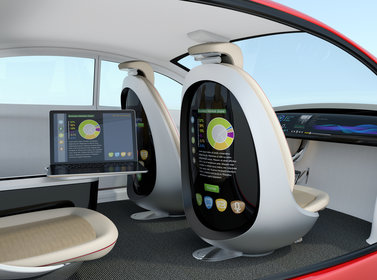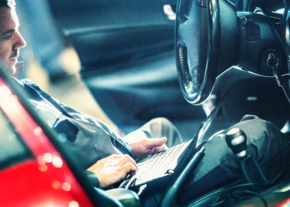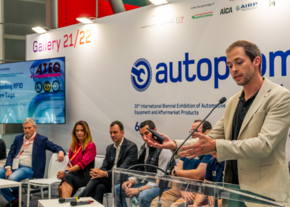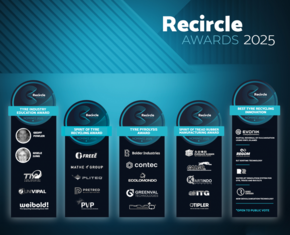
23/04/2018
Autonomous Cars, new liability rules in the event of accidents
Dino Collazzo
Passenger, manufacturer or software designer: who is to blame in the event of a claim when a “self-driving” vehicle is involved? We spoke about it with Laura Lecchi, lawyer and author on the subject of IT Law at the School of Engineering of the University of Bologna
The deadly accident in Tempe, Arizona, in which an autonomous car was involved, re-opened the age-old debate around attribution of liability in the event of an accident when self-driving vehicles are involved. For Laura Lecchi, lawyer and author in the field of IT Law at the School of Engineering of the University of Bologna, the discussion has just begun and will require much debating and in-depth analysis on both ethical and legal grounds before a clear and detailed legislation can be produced.
Dr. Lecchi, in the event of an accident where a totally autonomous car is involved, how is liability established and to whom should it be attributed?
"At present, both the Law and its interpretation have missed the opportunity to reflect and try their hand with liabilities incurred by autonomously driven vehicles. However, today's legal framework provides for the application of product liability regulations, according to the Presidential Decree 224 dated 1988. The passenger cannot be held responsible as he himself would be considered a passive element and not directly responsible for causing the accident; the vehicle manufacturer, on the other hand, would be responsible for the mechanical and physical components of the vehicle. Therefore, following the criteria of this legislation, the responsibility in case of damage caused by an automobile should be traced back to those who produced the commodity: now, though, comes another question; what should be understood by “produced the commodity”? If the defect that caused the accident should be attributed to the vehicle management software, according to a systematic interpretation, any responsibility should fall upon whoever has developed the software. The "faulty" compilation of the source code could therefore come under investigation as a possible cause of the accident”.
The current Italian and European Traffic Laws are stuck with level 0 and 1 vehicles. What are the regulatory changes to be adopted, taking into account also the ethical implications that such technological development brings with it ?
"The considerations on ethical and juridical grounds are anything but insignificant. We find ourselves in the delicate sphere that pertains to artificial intelligence. Although there are still no rules disciplining the liability of the Internet of Things, it must be said that the 4.0 age can draw inspiration from a resolution of the European Parliament dated February 2017, with recommendations made to the Commission concerning rules of Civil Law to be applied on robotics (2015/2103 (INL). According to this document, the areas in which an appropriate legislative intervention must be deemed necessary are: AI's software production criteria, liabilities as a result of malfunctions or lack of AI development, intellectual property and data flow, the cross-border development of automated and autonomous vehicles, in order to fully exploit their economic potential and benefit from the positive effects of future technological trends: a fragmented regulatory approach would hinder the implementation of autonomous transport systems and would threaten European competitiveness. Several aspects need to be regulated: civil liability, road safety, all issues related to the environment, issues related to access to data, protection of personal data, protection of privacy and data-sharing as well as issues related to ICT infrastructures and employment”.
Several years will be needed before totally autonomous driving becomes the accepted standard of mobility. Meanwhile, we hear of talks on assisted or semi-autonomous driving thanks to Adas systems. In this case how should liability be regulated? Are there cases in which a claim of contributory negligence can be applied to drivers, manufacturers and even repairers?
"In an event where the driver enjoys autonomous judgement, even if partially reduced, the responsibility of the latter cannot be completely excluded. According to traditional civil liability measures, those who could be held accountable for the damage caused may be the driver, the manufacturer or the authorized workshop. However, I believe that the driver's reaction time plays a key role if he is called upon to unexpectedly take control of the vehicle: therefore, all parties involved should provide realistic data for the definition of safety and liability issues".
In view of all this, if we were to establish a hierarchical scale of responsibility in the event of an accident, who would be at the top and who at the bottom?
"In the context of liability in case of a semi-autonomous vehicle, the driver's fault cannot be completely eliminated although it would be necessary to distinguish between situations in which the driver can actively intervene and those in which he is totally passive: as such, technology has the “supremacy” over the vehicle. Things differ considerably with totally autonomous vehicles, where the software company that conceived, designed and developed the software is the owner of the intellectual work, but also responsible for the flaws of its technology. In fact, this is not a whole new topic, given that, even in my experience as a lawyer, I had to deal with cases in which the operating system of a vehicle could actually reduce, to the point of compromising it, the safety of a motor vehicle which reacted quite differently from the commands given by the driver. In this logic it is only obvious to think that human conduct will be considered increasingly less responsible for any action that might cause a liability, thus occupying the lowest level of the scale".
These fully autonomous cars have certainly opened a heated debate in the insurance world. If in the future, as several analysts confirm, these vehicles will lead to zero accidents, why be insured?
"I believe that future legislative instruments, regardless of the legal solution that will be identified in terms of civil liability for damages caused by artificial intelligence, should in no way limit the type or extent of damages to be compensated, nor should it limit the forms of compensation that can be offered to the injured party simply because the damage is caused by a non-human subject. The responsibility of AI devices should be proportional to the actual level of instructions given, to the degree of autonomy, to the ability to learn according to its inherent machine learning potential: autonomy implies the possibility to determine the actual responsibility for the damage caused, although the higher capacity stemming from "upgrading" AI software should not be confused with what is strictly dependent on their self-learning skills. In view of this, I believe that unlike traditional motor vehicle insurance schemes, which deal mostly with human errors, in the case of autonomous vehicles, insurance companies should take into account all potential responsibilities along the entire production chain. Therefore, exploring, examining and evaluating the impact of any future legislative instrument, will be increasingly necessary, and the implications of all possible legal solutions including, as suggested by a EU resolution: the establishment of a mandatory insurance regime, necessary for specific categories of robots, under which, manufacturers and owners of autonomous vehicles are required to underwrite insurance policies to compensate any damage potentially caused by such vehicles; the creation of a compensation fund; the possibility for the manufacturer, programmer and owner or user to benefit from a limited liability if they constitute a compensation fund and jointly sign an insurance policy that provides compensation in the event of damage caused by an autonomous vehicle; the provision of an individual registration number, to be included in a specific EU register, in order to clearly associate the self-driving vehicle to a compensation fund as well as creating a specific legal status for self-driving vehicles, so that, at least the most sophisticated ones, can be held liable for compensating any damage caused by them, especially where such vehicles may be able to take independent decisions or interact independently with third parties".
Dr. Lecchi, in the event of an accident where a totally autonomous car is involved, how is liability established and to whom should it be attributed?
"At present, both the Law and its interpretation have missed the opportunity to reflect and try their hand with liabilities incurred by autonomously driven vehicles. However, today's legal framework provides for the application of product liability regulations, according to the Presidential Decree 224 dated 1988. The passenger cannot be held responsible as he himself would be considered a passive element and not directly responsible for causing the accident; the vehicle manufacturer, on the other hand, would be responsible for the mechanical and physical components of the vehicle. Therefore, following the criteria of this legislation, the responsibility in case of damage caused by an automobile should be traced back to those who produced the commodity: now, though, comes another question; what should be understood by “produced the commodity”? If the defect that caused the accident should be attributed to the vehicle management software, according to a systematic interpretation, any responsibility should fall upon whoever has developed the software. The "faulty" compilation of the source code could therefore come under investigation as a possible cause of the accident”.
The current Italian and European Traffic Laws are stuck with level 0 and 1 vehicles. What are the regulatory changes to be adopted, taking into account also the ethical implications that such technological development brings with it ?
"The considerations on ethical and juridical grounds are anything but insignificant. We find ourselves in the delicate sphere that pertains to artificial intelligence. Although there are still no rules disciplining the liability of the Internet of Things, it must be said that the 4.0 age can draw inspiration from a resolution of the European Parliament dated February 2017, with recommendations made to the Commission concerning rules of Civil Law to be applied on robotics (2015/2103 (INL). According to this document, the areas in which an appropriate legislative intervention must be deemed necessary are: AI's software production criteria, liabilities as a result of malfunctions or lack of AI development, intellectual property and data flow, the cross-border development of automated and autonomous vehicles, in order to fully exploit their economic potential and benefit from the positive effects of future technological trends: a fragmented regulatory approach would hinder the implementation of autonomous transport systems and would threaten European competitiveness. Several aspects need to be regulated: civil liability, road safety, all issues related to the environment, issues related to access to data, protection of personal data, protection of privacy and data-sharing as well as issues related to ICT infrastructures and employment”.
Several years will be needed before totally autonomous driving becomes the accepted standard of mobility. Meanwhile, we hear of talks on assisted or semi-autonomous driving thanks to Adas systems. In this case how should liability be regulated? Are there cases in which a claim of contributory negligence can be applied to drivers, manufacturers and even repairers?
"In an event where the driver enjoys autonomous judgement, even if partially reduced, the responsibility of the latter cannot be completely excluded. According to traditional civil liability measures, those who could be held accountable for the damage caused may be the driver, the manufacturer or the authorized workshop. However, I believe that the driver's reaction time plays a key role if he is called upon to unexpectedly take control of the vehicle: therefore, all parties involved should provide realistic data for the definition of safety and liability issues".
In view of all this, if we were to establish a hierarchical scale of responsibility in the event of an accident, who would be at the top and who at the bottom?
"In the context of liability in case of a semi-autonomous vehicle, the driver's fault cannot be completely eliminated although it would be necessary to distinguish between situations in which the driver can actively intervene and those in which he is totally passive: as such, technology has the “supremacy” over the vehicle. Things differ considerably with totally autonomous vehicles, where the software company that conceived, designed and developed the software is the owner of the intellectual work, but also responsible for the flaws of its technology. In fact, this is not a whole new topic, given that, even in my experience as a lawyer, I had to deal with cases in which the operating system of a vehicle could actually reduce, to the point of compromising it, the safety of a motor vehicle which reacted quite differently from the commands given by the driver. In this logic it is only obvious to think that human conduct will be considered increasingly less responsible for any action that might cause a liability, thus occupying the lowest level of the scale".
These fully autonomous cars have certainly opened a heated debate in the insurance world. If in the future, as several analysts confirm, these vehicles will lead to zero accidents, why be insured?
"I believe that future legislative instruments, regardless of the legal solution that will be identified in terms of civil liability for damages caused by artificial intelligence, should in no way limit the type or extent of damages to be compensated, nor should it limit the forms of compensation that can be offered to the injured party simply because the damage is caused by a non-human subject. The responsibility of AI devices should be proportional to the actual level of instructions given, to the degree of autonomy, to the ability to learn according to its inherent machine learning potential: autonomy implies the possibility to determine the actual responsibility for the damage caused, although the higher capacity stemming from "upgrading" AI software should not be confused with what is strictly dependent on their self-learning skills. In view of this, I believe that unlike traditional motor vehicle insurance schemes, which deal mostly with human errors, in the case of autonomous vehicles, insurance companies should take into account all potential responsibilities along the entire production chain. Therefore, exploring, examining and evaluating the impact of any future legislative instrument, will be increasingly necessary, and the implications of all possible legal solutions including, as suggested by a EU resolution: the establishment of a mandatory insurance regime, necessary for specific categories of robots, under which, manufacturers and owners of autonomous vehicles are required to underwrite insurance policies to compensate any damage potentially caused by such vehicles; the creation of a compensation fund; the possibility for the manufacturer, programmer and owner or user to benefit from a limited liability if they constitute a compensation fund and jointly sign an insurance policy that provides compensation in the event of damage caused by an autonomous vehicle; the provision of an individual registration number, to be included in a specific EU register, in order to clearly associate the self-driving vehicle to a compensation fund as well as creating a specific legal status for self-driving vehicles, so that, at least the most sophisticated ones, can be held liable for compensating any damage caused by them, especially where such vehicles may be able to take independent decisions or interact independently with third parties".










